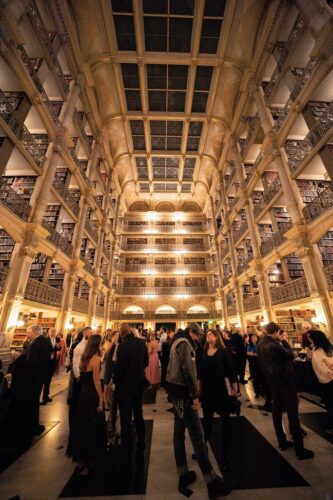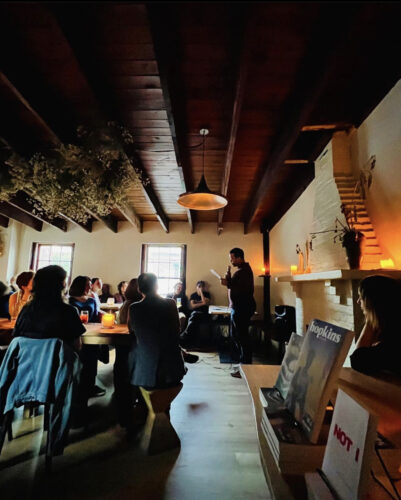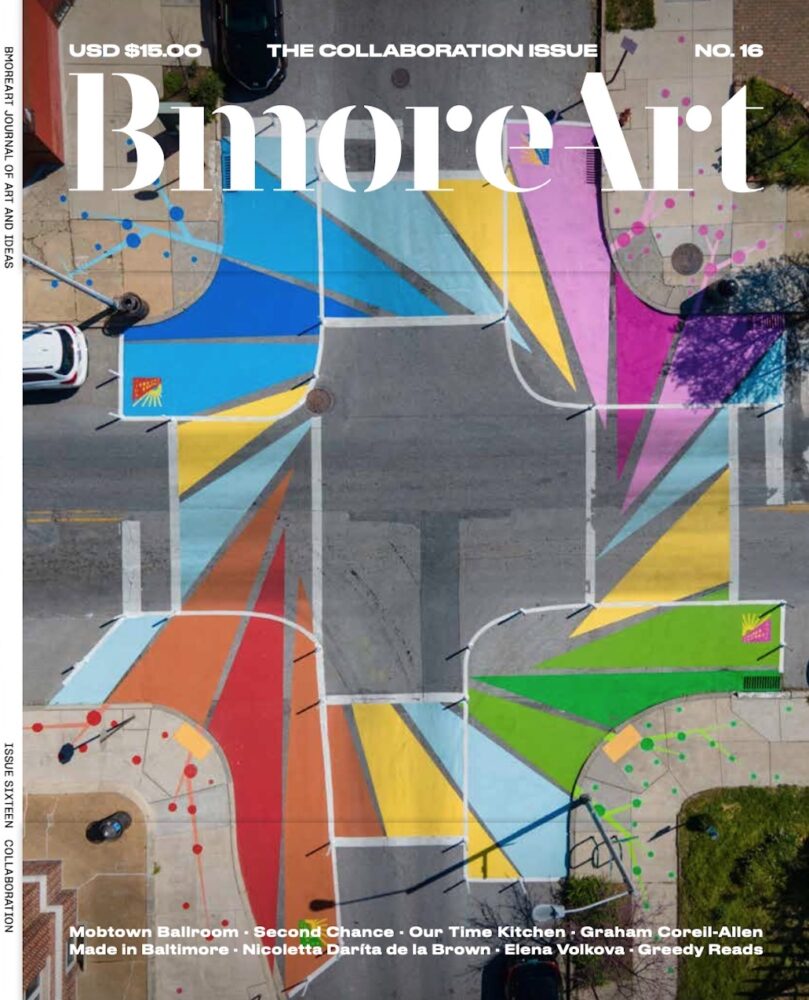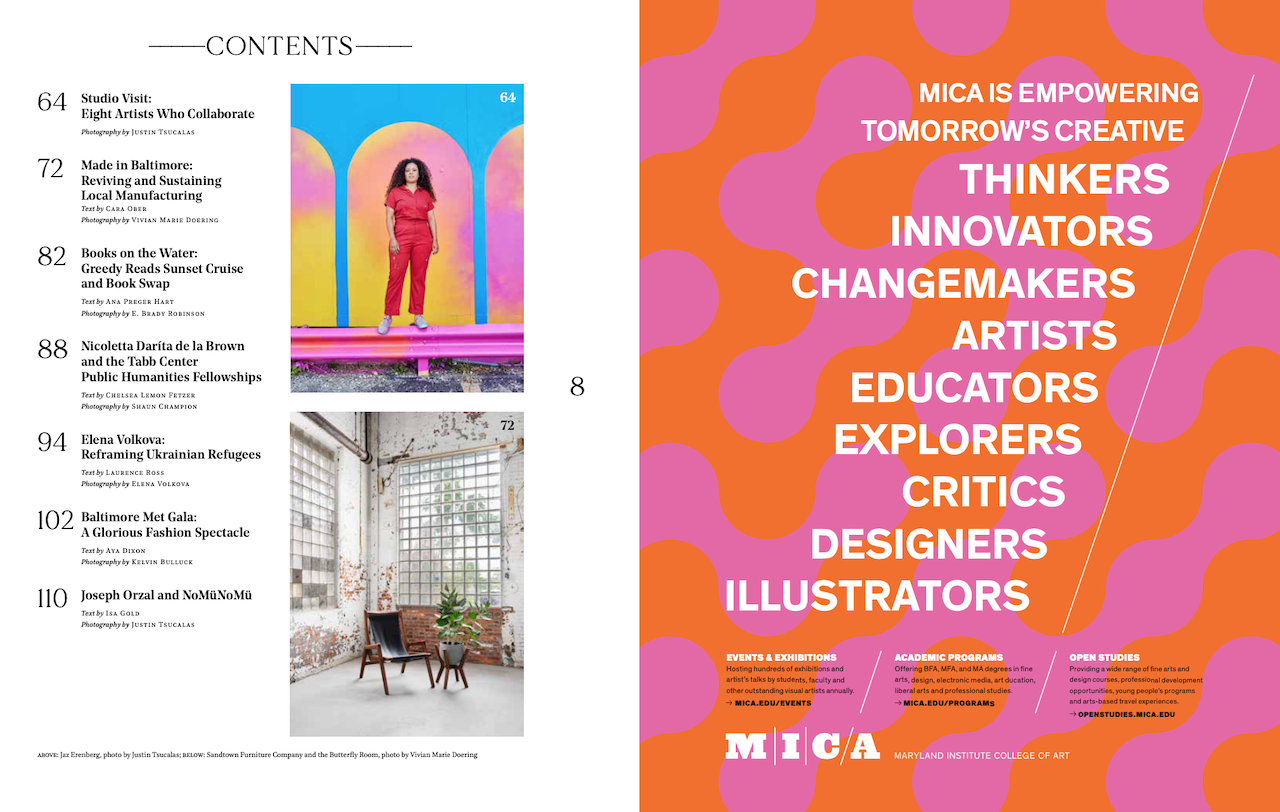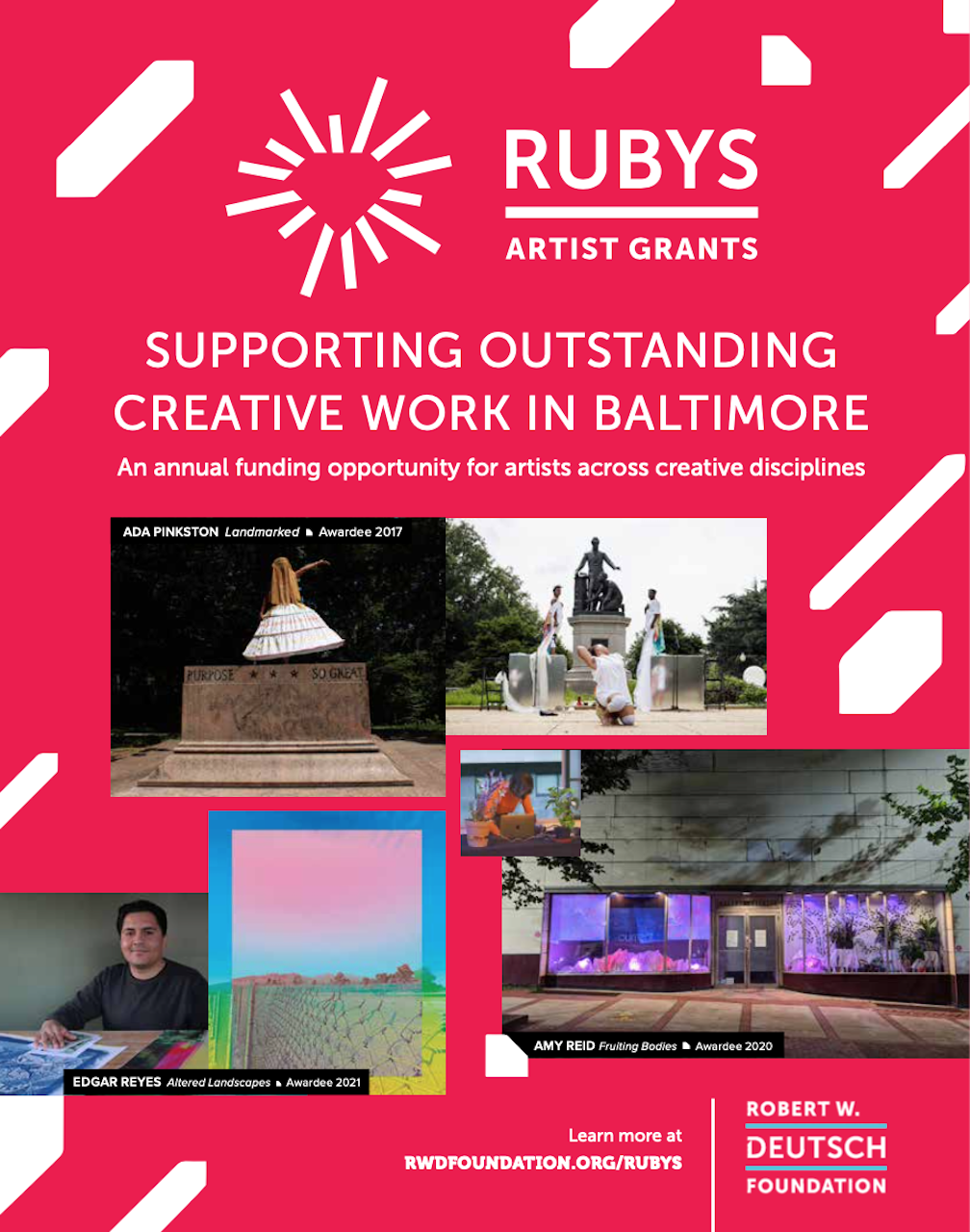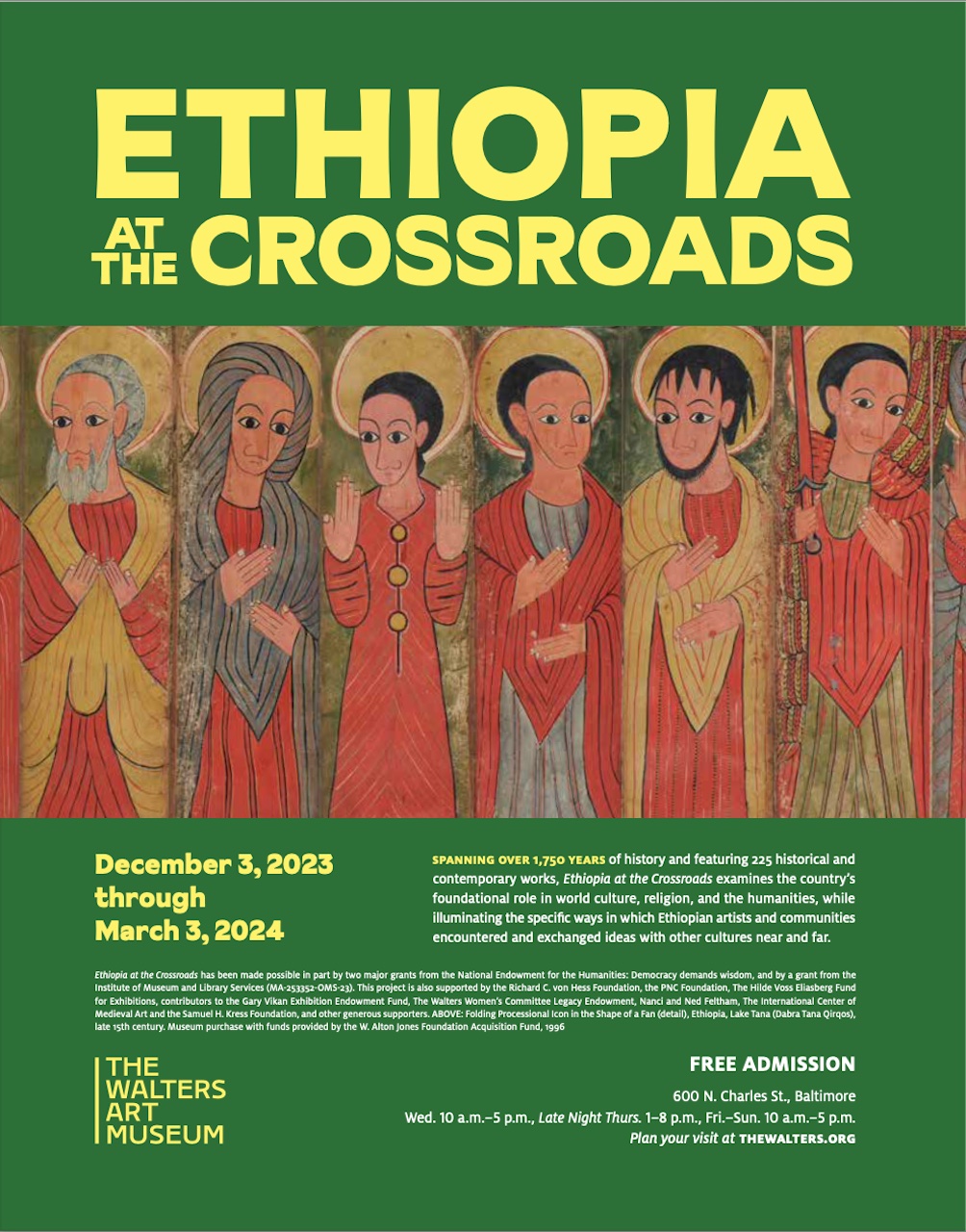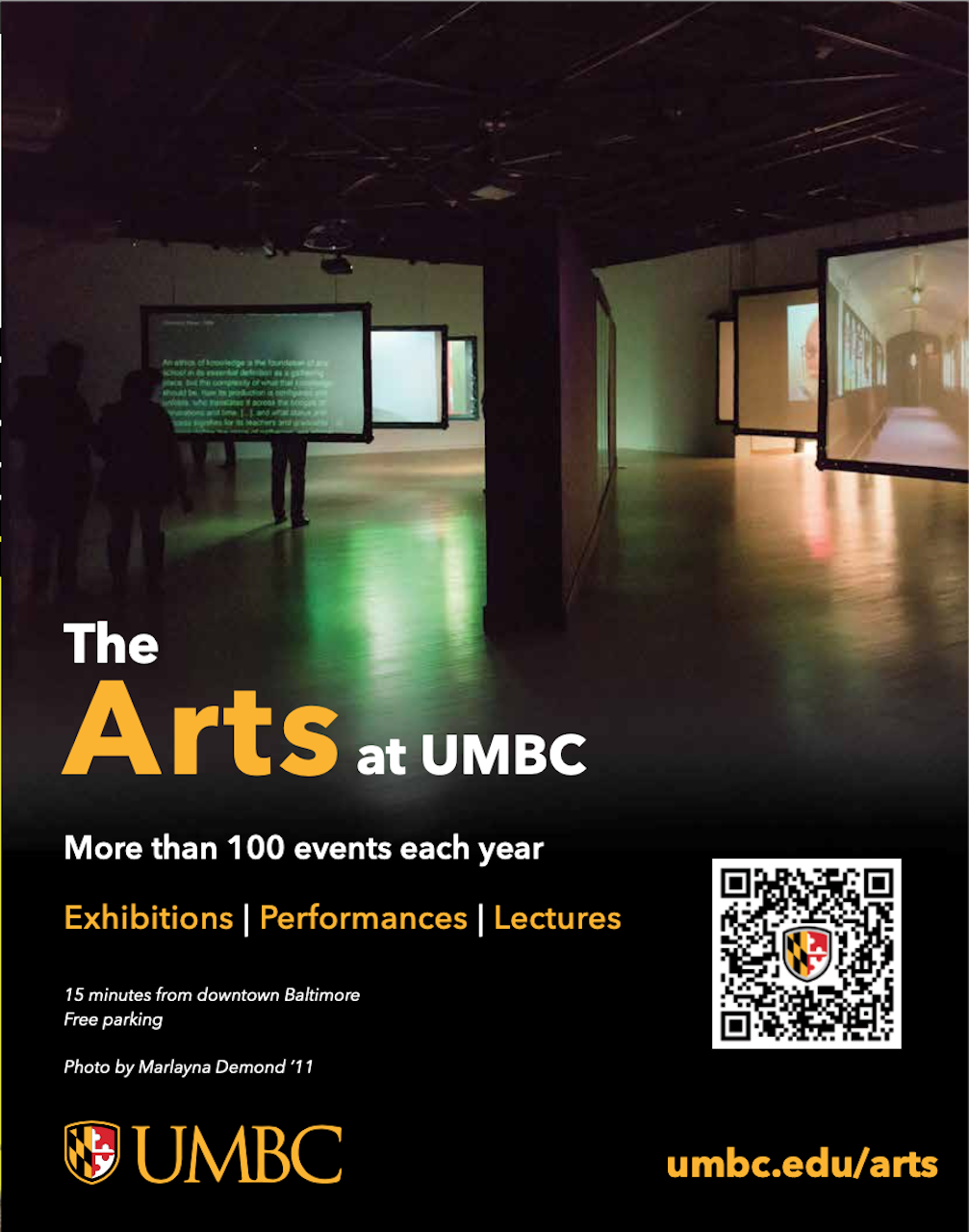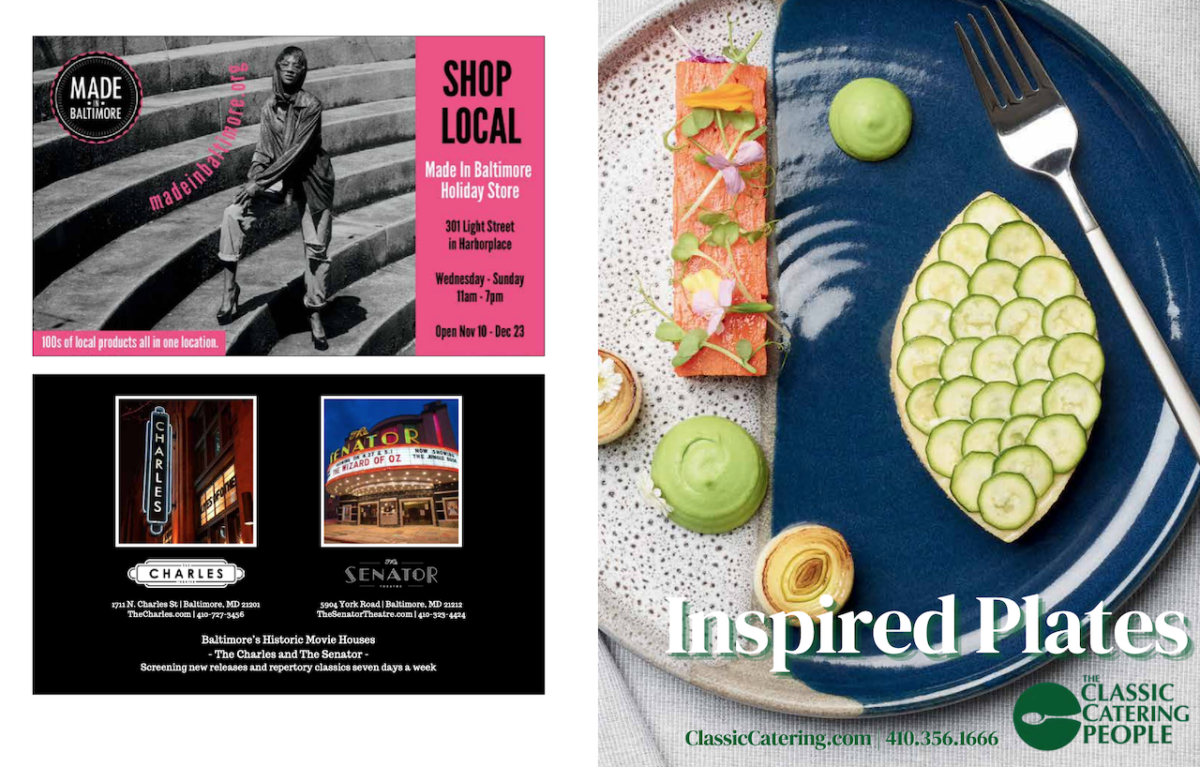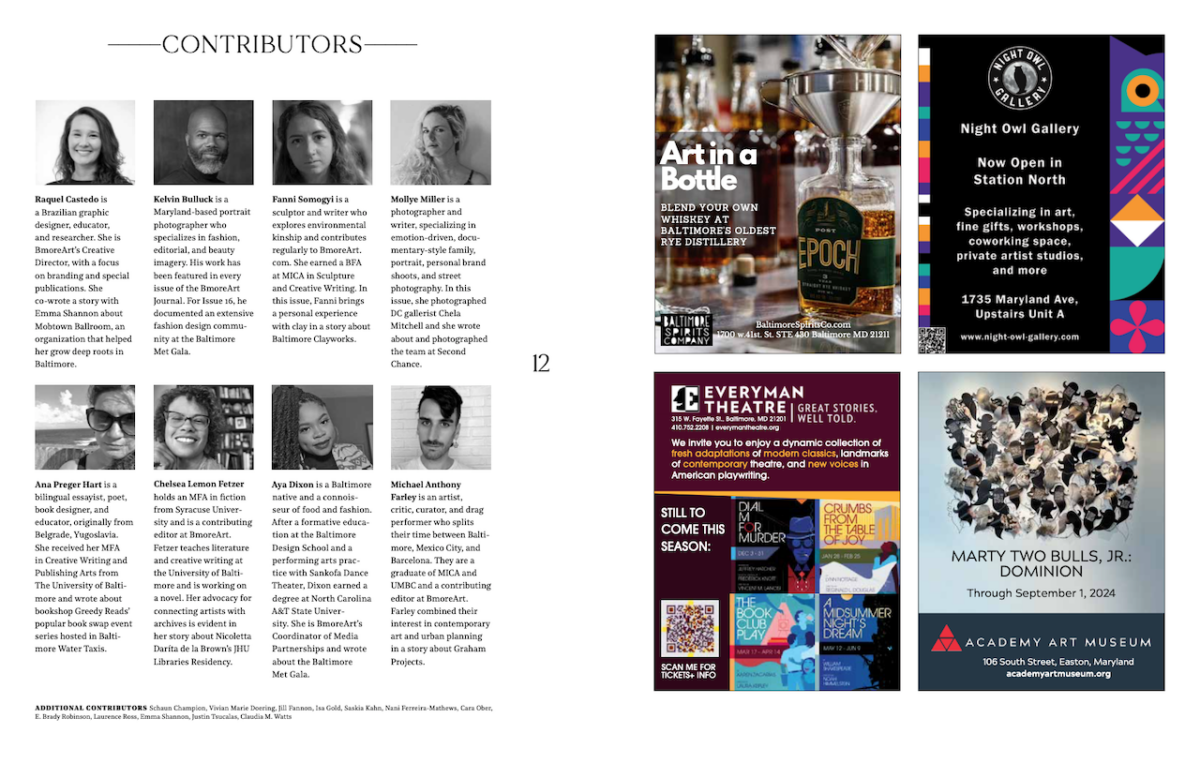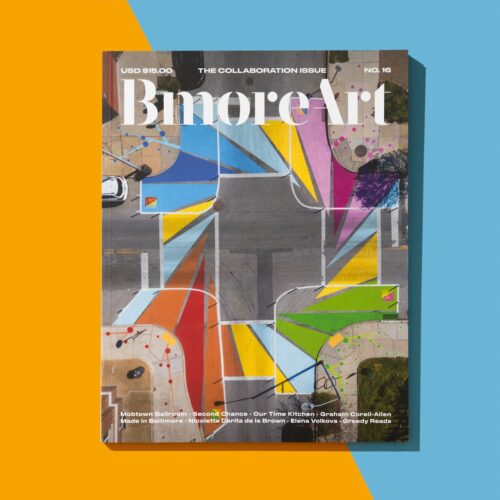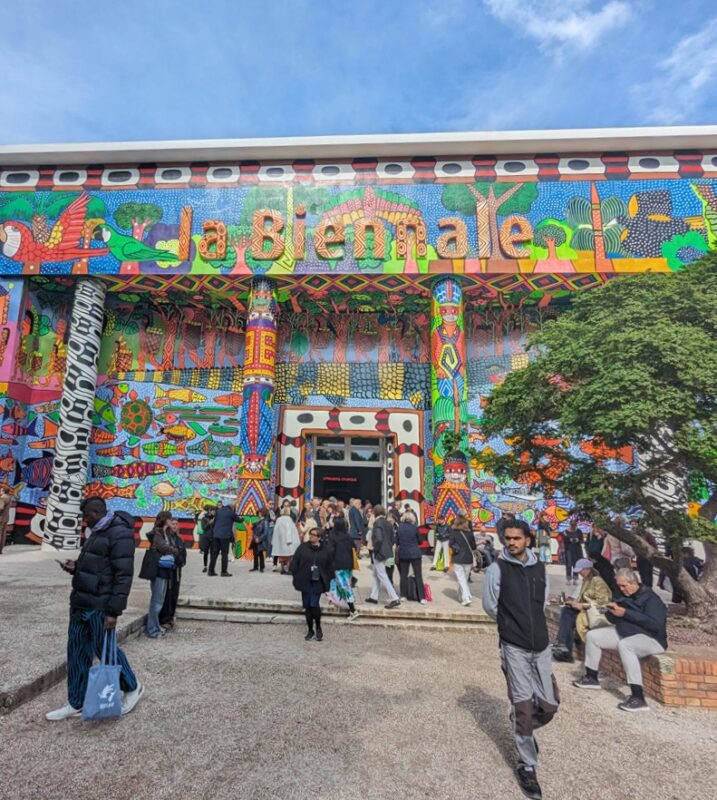I know we tend to emphasize the subjects of our stories, but I would like to draw your attention to our advertising partners in Issue 16. While this might seem obvious, I need to say it, over and over again: BmoreArt cannot exist without the support of a variety of organizations, institutions, and individuals. This is what advertising IS for us; it’s an ongoing partnership.
Within a traditional commercial setting, advertising is a transactional relationship between someone who wants access to a specific audience and a large publication, one with an entire staff dedicated to selling ads. HOWEVER, our team is made of just four incredible, high-functioning people, with two part-time editors, so for us, these relationships are collaborative and personal.
At BmoreArt, any and all advertising purchases are a vote of confidence in our mission and continued existence. We may be a small publication, but our readers are 100% engaged with the arts and culture, so what we offer is niche, but also–incredibly special and powerful.
We spend an extraordinary amount of time trying to secure support for our publication in this way, and we appreciate SO MUCH the organizations who simply say YES when we ask for their support, whatever form that support takes. For our team, these relationships are vital and we look forward to collaborating with our media partners throughout the year around the shared mission of elevating Baltimore art and culture so that artists and organizations succeed.
Our city needs innovative creative networks and we are all enriched by the artists and organizations forging a path forward. For those organizations who made the choice to support BmoreArt in this way, we cannot thank you enough!
Readers, please send a virtual round of applause to: The Walters Art Museum, BOPA, Visit Baltimore, MICA, UMBC, The Ruby’s, Creative Alliance, Classic Catering, The Reginald Lewis Museum, Made in Baltimore, Everyman Theatre, Night Owl Gallery, Academy Art Museum, Highlandtown Gallery, the American Craft Council, Open Works, the Charles and Senator Theatres, Union Brewing, and Baltimore Spirits Company. Whether you are familiar with these organizations or they are new to you, I encourage you to give them another look and consider the value of choosing to support local and regional organizations who support other organizations.
I see the hard work these entities are doing for the arts and artists in the region and appreciate it. For all those who said NO and chose not to engage with us in this way, we hope you’ll reconsider next time–and mainly because you appreciate what BmoreArt is doing and you want us to continue to do it, and not because we have a specific circulation or the generic visibility of city busses or billboards.
Collaboration is essential but also inconvenient and messy. It is exactly when relationships are the least convenient that it is most important to honor our commitments and consider what our values are. Partnership requires time: for conversations and communication, for listening and consensus, and to create a space where disagreement can be honored.
These conversations are difficult, but essential, when we operate from a place of learning together. This is where solid relationships are forged and it is only through collaboration, understanding that we cannot achieve our goals separately, that we succeed together.
SUBSCRIBE to join our community and receive Issue 16 in the mail. If you want to be invited to our release parties and private events, subscribe at the Artist or Premium Level! If you’re not yet a subscriber, you can head to area booksellers next week to purchase in person! We will deliver them as soon as we can.
